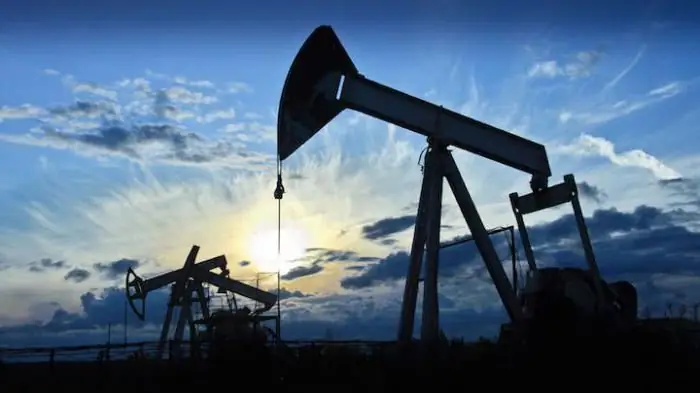2026 Author: Howard Calhoun | [email protected]. Last modified: 2025-01-24 13:10:43
Have you ever wondered why a ship doesn't sink? If you build a raft of wood, then it can safely float on the water. But if you make it from metal or stone, then it will sink to the bottom. It is not difficult to explain this phenomenon. After all, the density of stone or metal is different from the density of wood. They talk about it in physics lessons. The fact is that the density of wood is much less than the density of metal. At the same time, the indicator of the buoyant force of water is much higher than the indicator of the force of gravity that acts on the raft. With metal, things are a little different. Its density is high enough that the buoyant force is not able to overcome the force of gravity. As a result, the raft sinks. But why doesn't the ship sink now when they are made of metal?

If sheathe a tree
In the old days, ships were built only from wood. But everything is changing. Now ships are built from a more reliable and durable material - metal. But why doesn't the ship sink? Does he get heavier? What is the reason? Maybe there is more wood inside than metal?
If you take a tree and sheathe it with very thin sheet metal, the structure will not sink. This phenomenon can be explainedafter doing some calculations. So, the average density of the structure will be less than the density of water. Here are the simple numbers. If we take a mass of wood of 100 kilograms with a density of 600 kilograms per cubic meter, and a metal sheathing weighing 20 kilograms and a density of 7800 kilograms per cubic meter, then the total weight of the vessel will be only 120 kilograms, and the volume will be 0.168 cubic meters. It remains to find the average density of the structure. To do this, you need to divide the mass by the volume. The result is approximately 714 kilograms per cubic meter. This indicator is less than that of water. This suggests that a wooden vessel, pre-sheathed with sheet metal, will not sink. After all, the density of water is 1000 kilograms per cubic meter.

Modern designs
The design of the ship is quite simple. You can not sheathe wood with metal. It is enough to leave an empty cavity inside the structure, into which water will not enter. Of course, this expression is slightly incorrect. The cavity will be filled with air. After all, the density of this mixture of substances is only 1.29 kilograms per cubic meter.
That's why the ship doesn't sink when it's deep. Indeed, inside the structure there are large cavities that are filled with air. Due to this, the density of the entire ship is much less than the density of water. As a result, the buoyancy force keeps the structure afloat.
Why doesn't water get inside the ship
Of course, if water gets into the cavity, the ship will inevitably sink. To prevent this from happening, partitions are made in that part of the structure that is located under water. As a result, compartments are formed. At the same time, they are sealed. Due to this, water that gets into one compartment cannot get into the second. If a hole appears in the hull, then the ship will not go to the bottom. Only the compartment where water enters will be flooded. The rest will remain filled with air.

How goods are transported
A ship usually has weight. And it is equal to the mass of water, the volume of which the ship occupies in the sea. Of course, an ocean ship is unlikely to sail empty. Usually, with the help of a ship, not only people are transported, but also large loads. An empty ship weighs much less. This means that it will not sink deep in the water. If the ship is loaded, it will sink more. But why does the ship not sink even with a large load?
Usually, a line is drawn on the ship's hull - the waterline. The ship must not submerge below this pointer. Otherwise, it will be overloaded, and any large wave may flood the structure.
Recommended:
When and why does Sberbank not work? Reasons, features

Sberbank services are used by 70 million Russians, not counting clients abroad. The bank is distinguished by its reliability and stability. But even in his work there are occasional failures. What should clients do if Sberbank does not work and how to understand the causes of problems?
Who does not want to know a lot, or Which bank does not check credit history

We receive money with a black mark in the dossier: which bank does not check credit history? Where can you find such a lender, and where does nothing shine for you?
Why cauliflower does not tie: the main reasons

So, let's try to answer the question why cauliflower is not tied. After all, if there are no ovaries, there will be no harvest
Why does the ruble depend on oil and not on gas or gold? Why does the ruble exchange rate depend on the price of oil, but the dollar exchange rate does not?

Many in our country are wondering why the ruble depends on oil. Why is it that if the price of black gold decreases, the price of imported goods rises, is it more difficult to get out to rest abroad? At the same time, the national currency becomes less valuable, and with it, all savings
What will happen if the cow is not milked. Why does the cow not give milk

Today, many people are returning to subsistence farming and have cattle to have the freshest and most natural food on their table. But not all of them know how to properly care for animals. What happens if the cow is not milked? How many times does it need to be milked? And why does the horned nurse lose her milk?

